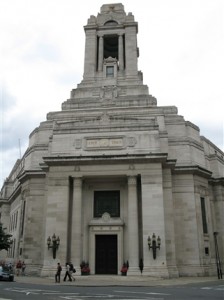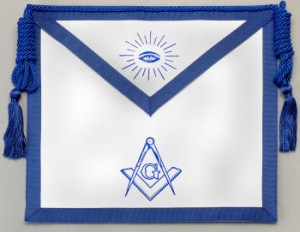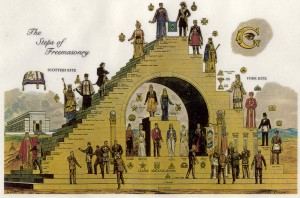Masonic Organization
Freemasons are the largest, and oldest, secret society still practicing today. The key to success is the intense detail of Masonic Organization. Freemasonry is organized into Lodges that have their own power structures. There is no universal authority over Freemasons. The highest authority is the Grand Lodge. Grand Lodges are independent and have sovereign authority over their members. Grand Lodges over see jurisdictions that are tied to geographical areas. All Grand Lodges recognize each other and their jurisdictions and therefore are not in competition with each other, but instead function out of mutual respect. Grand Lodges have several smaller Masonic Lodges that reporting up to them. Each Masonic Lodge elects its own officers and manages it’s own assets and members. Lodge Officers are:
- Worshipful Master
- Senior Warden
- Junior Warden
- Secretary
- Treasurer
- Senior Deacon
- Junior Deacon
- Senior Steward
- Junior Steward
- Marshall
- Inner Guard
- Tyler
- Chaplain
Grand Lodge officers include:
- Grand Marshal
- Deputy Grand Marshal
- Grand Chancellor
- Grand Registrar
- Grand Superintendent of Works
- Grand Sword Bearer
- Grand Standard Bearer
- Grand Pursuivant
Masonry Within the Lodge
Within a standard Lodge, business is conducted and initiations are run by the members. The vast majority of members in a masonic lodge are of the rank Master Mason. No rank below Master Mason is allowed to participate in the business of the lodge. Master Masons elect their officers, vote on initiating candidates, and manage the assets and philanthropic activities of the Lodge. Master Masons also participate in all the rituals associated with Masonry. While Fellow Craft Masons are allowed to observe Entered Apprentice initiation, they can not participate in the initiation. Many Lodges take a big part in Community Charitable giving and Freemasons also sponsor a Scholarship fund. In addition, North American Masons also sponsor CHIP, the Masonic Child Identification Program which aids in recovering lost or missing children. Masons assist this charity financially and through volunteer work.
Degrees of Freemasonry
There are multiple degrees of masonry, each with their own initiation ritual, handshake, password, and signs. The three main and most common levels of Masonry are, Entered Apprentice, Fellow Craft, and Master Mason. Even though the first two are officially Masons, no lodge business is done by anyone below the rank of Master Mason. There are 2 main Rites of Masonry, the Scottish Rite and the York Rite. The Scottish Rite has 33 different degrees of Masonry where the York Rite has 11. The image to the right depicts the degrees of Masonry and their hierarchy.


